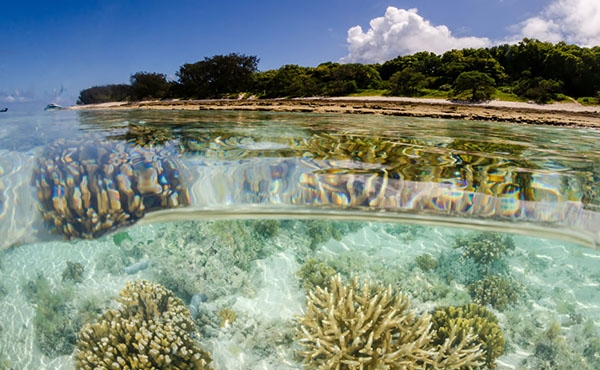Grading statements — Coastal ecosystems that support the Great Barrier Reef
All major habitats are essentially structurally and functionally intact and able to support all dependent species.
There is some habitat loss, degradation or alteration in some small areas, leading to minimal degradation but no persistent, substantial effects on populations of dependent species.
Habitat loss, degradation or alteration has occurred in a number of areas leading to persistent substantial effects on populations of some dependent species.
There is widespread habitat loss, degradation or alteration leading to persistent, substantial effects on many populations of dependent species.
or
Borderline Indicates where a component or criterion is considered close to satisfying the adjacent grading statement.
Confidence
Adequate high-quality evidence and high level of consensus
Limited evidence or limited consensus
Inferred, very limited evidence
An understanding of the condition of most coastal ecosystems remains a significant knowledge gap. The extent of each coastal ecosystem has remained generally stable, but woodlands continue to be affected by clearance, albeit at a slower rate than in 2019.
No significant changes in saltmarsh extent have occurred since 2019. However, little is known about saltmarsh condition, which is not currently monitored systematically across the Region. In future, both the extent and condition of saltmarshes are likely to be affected by rising sea levels.
Overall, the state of freshwater wetlands has not changed significantly since 2019. Pest introductions, habitat modification, water regime changes and pollutant inputs have affected wetlands in some locations within the Catchment.
Significant loss and fragmentation of forested floodplains occurred historically as a result of land clearing, but there has been limited change in extent and condition in the past 5 years.
The extent of heath and shrublands has remained stable over the past 5 years as little clearing has occurred across the Region.
Significant habitat loss has occurred since European settlement. The limited data available on grass and sedgelands show no recent significant changes to habitat extent.
The extent of historical habitat loss differs between regions and more remnant habitat remains in northern regions than elsewhere. The extent and condition of woodlands and forests continue to be affected by land clearing and forest fires. Overall, annual clearing rates have reduced in recent years, but vary among regions.
Rainforests are affected by climate change, land clearing and historical habitat loss and fragmentation. The extent of rainforests in the Catchment has remained relatively stable since 2019.


